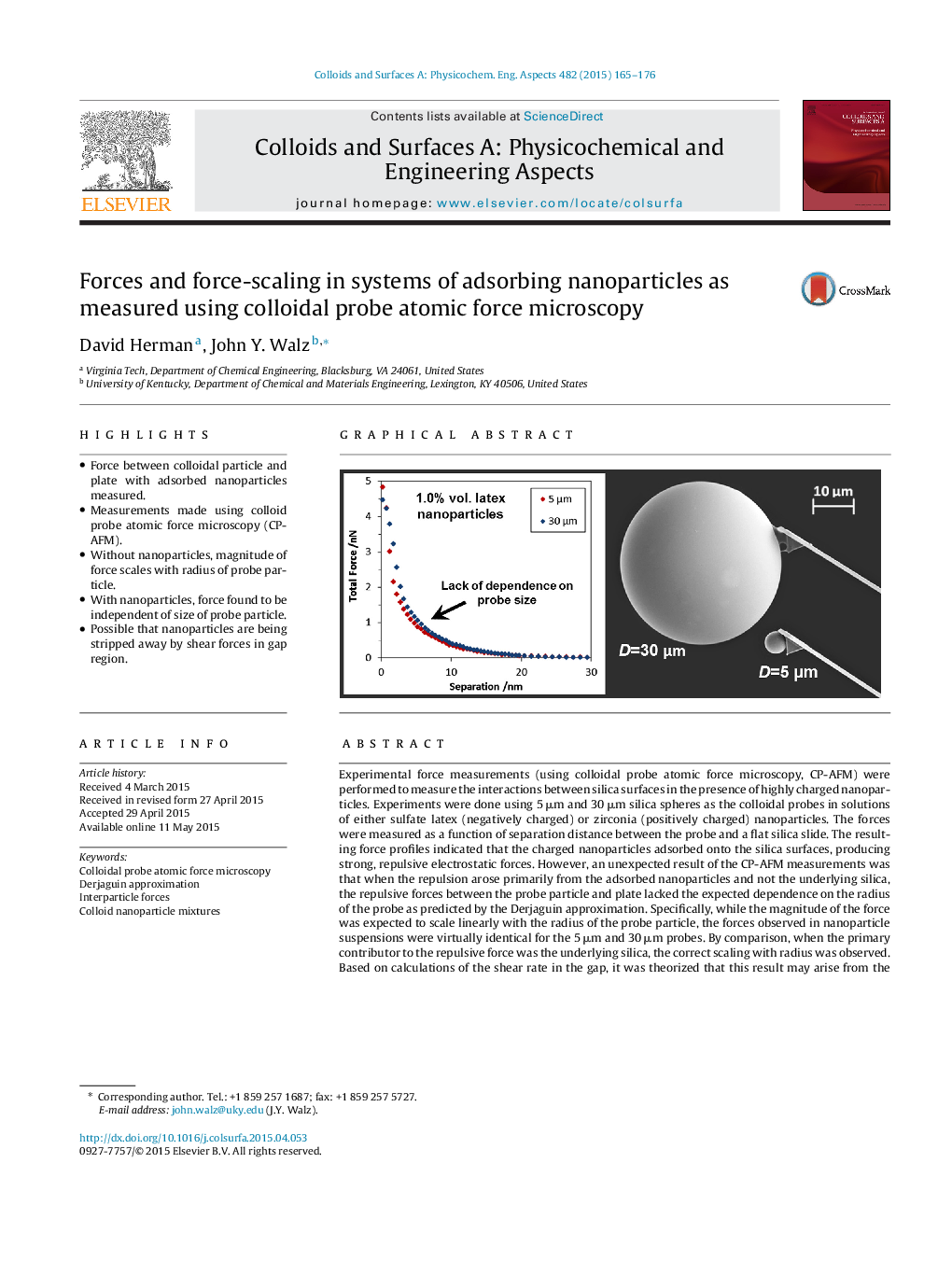| کد مقاله | کد نشریه | سال انتشار | مقاله انگلیسی | نسخه تمام متن |
|---|---|---|---|---|
| 592056 | 1453891 | 2015 | 12 صفحه PDF | دانلود رایگان |
• Force between colloidal particle and plate with adsorbed nanoparticles measured.
• Measurements made using colloid probe atomic force microscopy (CP-AFM).
• Without nanoparticles, magnitude of force scales with radius of probe particle.
• With nanoparticles, force found to be independent of size of probe particle.
• Possible that nanoparticles are being stripped away by shear forces in gap region.
Experimental force measurements (using colloidal probe atomic force microscopy, CP-AFM) were performed to measure the interactions between silica surfaces in the presence of highly charged nanoparticles. Experiments were done using 5 μm and 30 μm silica spheres as the colloidal probes in solutions of either sulfate latex (negatively charged) or zirconia (positively charged) nanoparticles. The forces were measured as a function of separation distance between the probe and a flat silica slide. The resulting force profiles indicated that the charged nanoparticles adsorbed onto the silica surfaces, producing strong, repulsive electrostatic forces. However, an unexpected result of the CP-AFM measurements was that when the repulsion arose primarily from the adsorbed nanoparticles and not the underlying silica, the repulsive forces between the probe particle and plate lacked the expected dependence on the radius of the probe as predicted by the Derjaguin approximation. Specifically, while the magnitude of the force was expected to scale linearly with the radius of the probe particle, the forces observed in nanoparticle suspensions were virtually identical for the 5 μm and 30 μm probes. By comparison, when the primary contributor to the repulsive force was the underlying silica, the correct scaling with radius was observed. Based on calculations of the shear rate in the gap, it was theorized that this result may arise from the shearing of adsorbed particles from the surfaces. Because the shear rate in the gap near the point of closest approach is independent of the size of the probe particle, this phenomenon could lead to small, similarly-sized patches of nanoparticles on the probe particles that effectively determine the electrostatic repulsion.
Figure optionsDownload as PowerPoint slide
Journal: Colloids and Surfaces A: Physicochemical and Engineering Aspects - Volume 482, 5 October 2015, Pages 165–176
